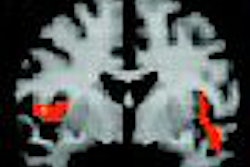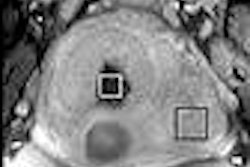Multidetector CT pulmonary angiography (CTPA) may be the best noninvasive exam for diagnosing pulmonary embolism (PE), but using it in every suspected case may not be desirable or even possible given the associated radiation burden and contrast risks. Now researchers are touting plain x-rays to determine who needs CTPA versus scintigraphy.
The study was led by Aditya Daftary from the diagnostic radiology department at Yale University School of Medicine, and published in a recent issue of the American Journal of Roentgenology (AJR, July 2005, Vol. 185:1, pp. 132-134).
CTPA has become a valuable tool for diagnosing PE, the authors noted, with some studies suggesting that it is adequate for excluding embolisms. "However," they wrote, even with some MDCT "there still appears to be inadequate filling to the subsegmental level in approximately 13% of subjects."
Other recent studies have found more definitive results in PE when a combination of CTPA and ventilation-perfusion scintigraphy is used. But limiting the use of CTPA to those patients with indeterminate ventilation-perfusion scans, the authors stated, "would result in an unnecessary delay and duplication of studies in approximately 39% of patients who would have intermediate probability studies."
Thus, the researchers sought to test whether using chest radiographs as a triage tool in determining the appropriate subsequent study for PE could expedite diagnosis and therapy.
As of July 2001, the Yale facility adopted a protocol in which all patients with suspected PE were triaged to CTPA or scintigraphy based on the findings of an initial chest x-ray.
All patients with normal chest x-rays were sent for scintigraphy. Those with abnormal findings such as focal parenchymal abnormalities were channeled to CTPA, unless they had contraindications such as poor renal function.
The researchers then retrospectively reviewed the results of PE imaging from before and after the protocol introduction.
In 1996, a total of 214 patients had been evaluated at their institution for PE with ventilation-perfusion scintigraphy only; in 2001, 213 were evaluated by CTPA and 157 by scintigraphy. The percentage of patients with normal chest x-rays increased from 51% (108) in 1996 to 60% (221) in 2001.
Overall, according to the authors, the percentage of definitive diagnoses increased from 70% (150/214) in 1996 to 91% (336/370) in 2001 after adopting the new triage method. Of note is that a majority of patients weren't subjected to the gold standard of pulmonary angiography.
Nonetheless, the authors concluded, "this protocol has worked well and we continue to follow it in our daily clinical practices. It appears that using a normal chest radiograph results in a 17% decrease in the number of indeterminate ventilation-perfusion scintigraphy scans with a corresponding 15% increase in low-probability scans, (considered a definitive result for the purposes of the study)."
By Tracie L. Thompson
AuntMinnie.com staff writer
September 16, 2005
Related Reading
Widen that search: CTPA reveals more non-PE than PE diagnoses, May 18, 2005
Meta-analysis shows CT is sufficient to exclude PE, April 27, 2005
Multidetector CT does not improve outcomes of suspected PE, April 12, 2005
CT venography plus CTPA finds more pulmonary embolism, February 1, 2005
Copyright © 2005 AuntMinnie.com



















